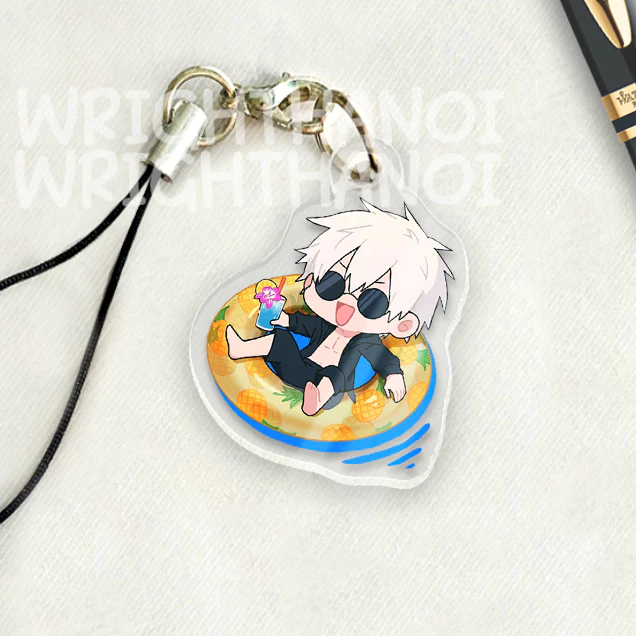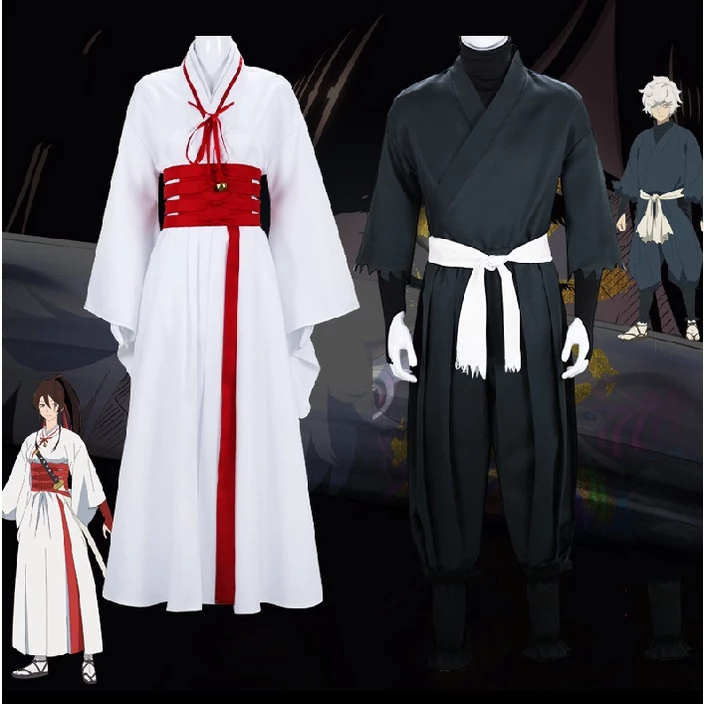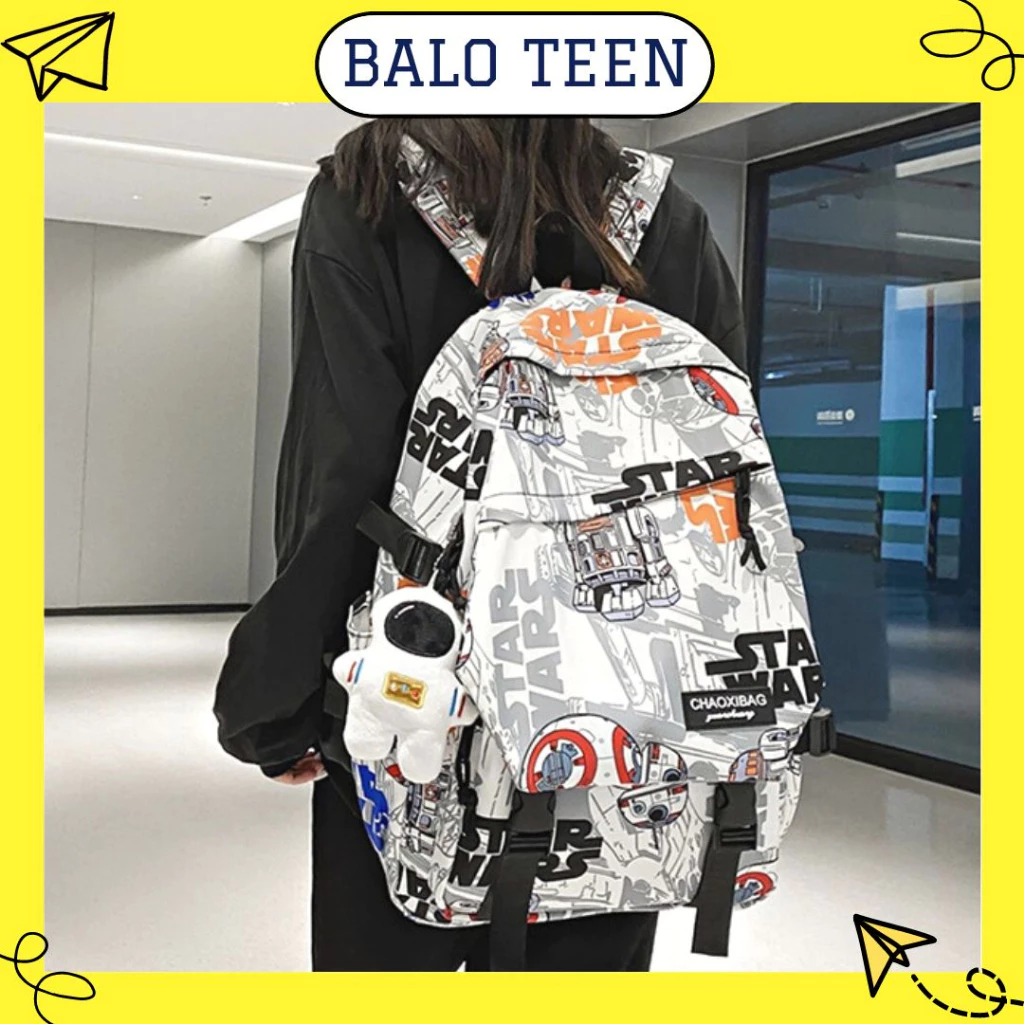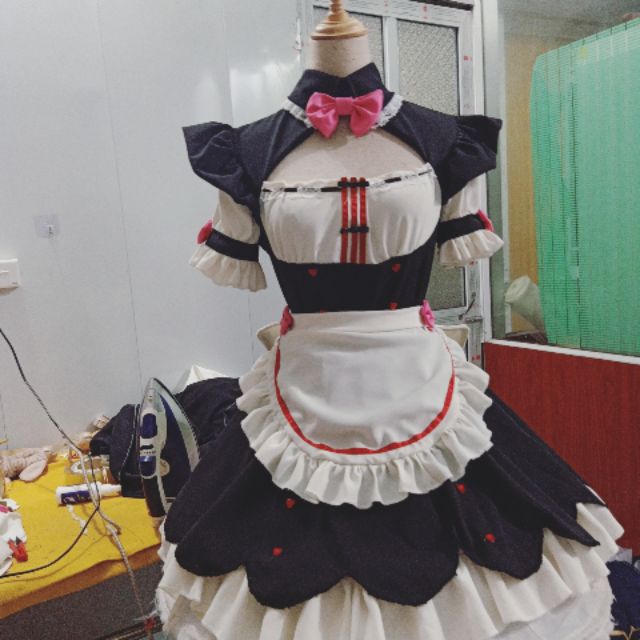Giao diện người dùng

Giao diện người sử dụng (tiếng Anh: User Interface, viết tắt: UI)[1] là điểm tương tác và giao tiếp giữa người và máy tính trong một thiết bị. Điều này có thể bao gồm màn hình hiển thị, bàn phím, chuột và sự xuất hiện của máy tính để bàn. Đó cũng là cách mà người sử dụng tương tác với một ứng dụng hoặc trang web. Bên cạnh đó, sự phụ thuộc ngày càng nhiều của doanh nghiệp vào các ứng dụng web. ứng dụng di động, mạng xã hội đã khiến nhiều công ty đặt ưu tiên cao hơn cho UI trong nỗ lực cải thiện trải nghiệm chung của người dùng.
Sơ lược lịch sử hình thành[2]
[sửa | sửa mã nguồn]Máy tính hàng loạt & Giao diện dòng lệnh (Batch Computer & Command Line Interface)
[sửa | sửa mã nguồn]Giao diện người dùng của máy tính hàng loạt (Batch computer) bao gồm đầu vào của thẻ đục lỗ hoặc phương tiện tương đương và ngoài bảng điều khiển này, con người không có tương tác với các máy tính trong thời gian thực.
Giao diện dòng lệnh [3] đã giảm đáng kể độ trễ xuống vài giây thay vì ngày hoặc giờ vì giao diện người dùng là một loạt các giao dịch đáp ứng yêu cầu. Và điều quan trọng là cho phép người dùng thay đổi suy nghĩ về các giao dịch để đáp ứng dữ liệu thời gian thực từ các giao dịch trước đó.
Hình thành giao diện người dùng đồ họa (Graphic User Interface)[4]
[sửa | sửa mã nguồn]
Giao diện người dùng kỹ thuật số và hệ thống con trỏ chuột có thể cho phép trải nghiệm người dùng hấp dẫn hơn. GUI đầu tiên được phát triển bởi các nhà nghiên cứu tại Trung tâm nghiên cứu Xerox Palo (parc) vào năm 1970 và là sự khởi đầu của sự đổi mới đồ họa máy tính cho tới thời điểm hiện nay..
Sự vươn lên của điện thoại thông minh (smartphone)[5]
[sửa | sửa mã nguồn]Đến cuối năm 2010, thiết kế giao diện người sử dụng máy tính bắt đầu thay đổi đáng kể do sự phổ biến của điện thoại thông minh. Sự thay đổi lớn trong phần cứng máy tính này khiến các nhà thiết kế phải suy nghĩ lại về giao diện ban đầu.[6]
Các quy tắc, quy chuẩn (principles)[7]
[sửa | sửa mã nguồn]Theo phương pháp thiết kế hướng tập trung vào sử dụng (usage-centered design[8]), những nguyên tắc này là:
- Nguyên tắc cấu trúc: Tổ chức giao diện người sử dụng một cách có chủ đích, dựa trên các mô hình rõ ràng, nhất quán, rõ ràng và dễ nhận biết đối với người sử dụng.Ví dụ như việc đặt những thứ liên quan lại với nhau và tách biệt những thứ không liên quan[9]
- Nguyên tắc đơn giản: Làm cho các tác vụ phổ biến, thường xuyên sử dụng trở nên dễ dàng, đơn giản. Đồng thời cung cấp các phím tắt hữu ích để rút ngắn các các quy trình dài hơn[10].
- Nguyên tắc hiển thị: Làm cho tất cả các tùy chọn và yếu tố cần thiết cho một tác vụ nhất định hiển thị cùng lúc mà không làm cho người sử dụng mất tập trung với thông tin không liên quan hoặc dư thừa. Một thiết kế tốt là thiết kế không áp đảo, bắt buộc người sử dụng với các lựa chọn thay thế hoặc nhầm lẫn với thông tin không cần thiết.[11]
- Nguyên tắc phản hồi: Thiết kế phải thông báo cho người sử dụng về các hành động hoặc giải thích về các thay đổi trạng thái, điều kiện và các lỗi hoặc các trường hợp ngoại lệ có liên quan và được người sử dụng quan tâm. Quá trình này phải thông qua ngôn ngữ rõ ràng, ngắn gọn và quen thuộc với họ.[12]
- Nguyên tắc linh hoạt: Thiết kế nên linh hoạt, giảm chi phí sai sót. Đồng thời ngăn ngừa lỗi bất cứ khi nào có thể bằng cách tiếp nhận các thông tin và trình tự khác nhau. Từ đó tiến hành diễn giải một cách hợp lý.[13]
- Nguyên tắc tái sử dụng: Thiết kế nên sử dụng lại các thành phần và hành vi bên trong và bên ngoài, duy trì tính nhất quán với mục đích thay vì chỉ nhất quán tùy ý, do đó giảm nhu cầu người sử dụng phải suy nghĩ lại và ghi nhớ[14]
Các dạng của UI[15]
[sửa | sửa mã nguồn]
Cấu trúc theo dòng lệnh (Command-line)
[sửa | sửa mã nguồn]Giao diện dòng lệnh cho phép người sử dụng tương tác với máy tính bằng cách nhập lệnh. Máy tính hiển thị lời nhắc, các nút phím trong lệnh. Người dùng thực hiện bằng thao tác nhấn phím Enter hoặc Return.
Tương tác bằng menu và bảng chọn (Menu-driven)[16]
[sửa | sửa mã nguồn]Loại giao diện này cho phép bạn tương tác với máy tính hoặc thiết bị bằng cách thực hiện theo cách của bạn thông qua một loạt các màn hình hoặc menu. Hãy nghĩ về máy tính bảng hoặc điện thoại di động của bạn, cả hai đều sử dụng giao diện điều khiển menu. Bạn được trình bày với một menu, bạn đưa ra lựa chọn và sau đó menu tiếp theo xuất hiện trên màn hình.[17]
Giao diện đồ hoạ người dùng (Graphic User Interface):[18]
[sửa | sửa mã nguồn]Là một thuật ngữ trong ngành công nghiệp máy tính. Đó là một cách giao tiếp với máy tính hay các thiết bị điện tử bằng hình ảnh và chữ viết thay vì chỉ là các dòng lệnh đơn thuần. GUI được sử dụng phổ biến trong máy tính, các thiết bị cầm tay, các thiết bị đa phương tiện, hoặc các linh kiện điện tử trong văn phòng[19]
Xem thêm
[sửa | sửa mã nguồn]- Trải nghiệm người dùng
- Phân tích tìm kiếm
- Phân tích trang web
- Quảng cáo bám đuổi
- Quảng cáo biểu ngữ
- Quảng cáo lập trình
- Quảng cáo trực tuyến
- Thương hiệu số
- Tiếp thị chuyển đổi
- Tiếp thị liên kết
- Tiếp thị email
- Tiếp thị trở lại
- Tự động hóa tiếp thị
- Tối ưu hóa công cụ tìm kiếm
- Tối ưu hóa công cụ tìm kiếm cục bộ
- Trang kết quả của công cụ tìm kiếm
- Truyền thông trong sản phẩm
- Xác thực khách hàng tiềm năng
- Thiết kế web
- Thiết kế web đáp ứng
- Thương mại điện tử
- Thanh toán điện tử
- Quản lý quan hệ khách hàng
- Tiền điện tử
- Ứng dụng OTT
- Đồng thiết kế khách hàng
- Google Panda
Tham khảo
[sửa | sửa mã nguồn]- ^ [(https://searchapparchitecture.techtarget.com/definition/user-interface-UI) "What is User Interface ?"].
{{Chú thích web}}: Chú thích có tham số trống không rõ:|url hỏng=(trợ giúp); Kiểm tra giá trị|url=(trợ giúp)[liên kết hỏng] - ^ "What is User Interface ?".
History of UI In early computers, there was very little user interface except for a few buttons at an operator's console. Many of these early computers used punched cards, prepared using keypunch machines, as the primary method of input for computer programs and data. While punched cards have been essentially obsolete in computing since 2012, some voting machines still use a punched card system.
{{Chú thích web}}: Chú thích có tham số trống không rõ:|url hỏng=(trợ giúp); line feed character trong|trích dẫn=tại ký tự số 14 (trợ giúp) - ^ "Command line interfaces".
Types of user interfaces The various types of user interfaces include: graphical user interface (GUI) command line interface (CLI)
{{Chú thích web}}: Chú thích có tham số trống không rõ:|url hỏng=(trợ giúp); line feed character trong|trích dẫn=tại ký tự số 25 (trợ giúp) - ^ "What is User Interface ?".
The various types of user interfaces include: graphical user interface (GUI) command line interface (CLI) menu-driven user interface touch user interface voice user interface (VUI) form-based user interface natural language user interface
{{Chú thích web}}: Chú thích có tham số trống không rõ:|url hỏng=(trợ giúp); line feed character trong|trích dẫn=tại ký tự số 46 (trợ giúp) - ^ "A Short History of Computer User Interface Design". Bản gốc lưu trữ ngày 21 tháng 11 năm 2022.
{{Chú thích web}}: Chú thích có tham số trống không rõ:|url hỏng=(trợ giúp) - ^ "A Short History of Computer User Interface Design". Bản gốc lưu trữ ngày 21 tháng 11 năm 2022.
Towards the end of the 2000's computer UI design started to change significantly due to the rise in popularity of the smartphone. This huge shift in computing hardware led to designers having to rethink interfaces from scratch. Of course there were portable devices before the Apple iPhone, including laptops (obviously) and handhelds such as Amstad's Pen Pad, US Robotics' PalmPilot and arguably the first smartphone: the IBM Simon in 1993, which was the first to include telephone and PDA features in one device.
{{Chú thích web}}: Chú thích có tham số trống không rõ:|url hỏng=(trợ giúp) - ^ "Principle of user unterface design".
{{Chú thích web}}: Chú thích có tham số trống không rõ:|url hỏng=(trợ giúp) - ^ "Usage-centered design".
{{Chú thích web}}: Chú thích có tham số trống không rõ:|url hỏng=(trợ giúp) - ^ "Principles of user interface design".
The structure principle: Design should organize the user interface purposefully, in meaningful and useful ways based on clear, consistent models that are apparent and recognizable to users, putting related things together and separating unrelated things, differentiating dissimilar things and making similar things resemble one another. The structure principle is concerned with overall user interface architecture.
{{Chú thích web}}: Chú thích có tham số trống không rõ:|url hỏng=(trợ giúp) - ^ "Principles of user interface design".
The simplicity principle: The design should make simple, common tasks easy, communicating clearly and simply in the user's own language, and providing good shortcuts that are meaningfully related to longer procedures.
{{Chú thích web}}: Chú thích có tham số trống không rõ:|url hỏng=(trợ giúp) - ^ "Principles of user interface design".
The visibility principle: The design should make all needed options and materials for a given task visible without distracting the user with extraneous or redundant information. Good designs don't overwhelm users with alternatives or confuse with unneeded information.
{{Chú thích web}}: Chú thích có tham số trống không rõ:|url hỏng=(trợ giúp) - ^ "Principles of user interface design".
The feedback principle: The design should keep users informed of actions or interpretations, changes of state or condition, and errors or exceptions that are relevant and of interest to the user through clear, concise, and unambiguous language familiar to users.
{{Chú thích web}}: Chú thích có tham số trống không rõ:|url hỏng=(trợ giúp) - ^ "Principles of user interface design".
The tolerance principle: The design should be flexible and tolerant, reducing the cost of mistakes and misuse by allowing undoing and redoing, while also preventing errors wherever possible by tolerating varied inputs and sequences and by interpreting all reasonable actions reasonable.
{{Chú thích web}}: Chú thích có tham số trống không rõ:|url hỏng=(trợ giúp) - ^ "Principle of user interface design".
The reuse principle: The design should reuse internal and external components and behaviors, maintaining consistency with purpose rather than merely arbitrary consistency, thus reducing the need for users to rethink and remember.
{{Chú thích web}}: Chú thích có tham số trống không rõ:|url hỏng=(trợ giúp) - ^ "What is User Interface ?".
Types of user interfaces The various types of user interfaces include: graphical user interface (GUI) command line interface (CLI) menu-driven user interface touch user interface voice user interface (VUI) form-based user interface natural language user interface
{{Chú thích web}}: Chú thích có tham số trống không rõ:|url hỏng=(trợ giúp); line feed character trong|trích dẫn=tại ký tự số 25 (trợ giúp) - ^ "4. Menu Driven Interface".
{{Chú thích web}}: Chú thích có tham số trống không rõ:|url hỏng=(trợ giúp) - ^ "4. Menu Driven Interface".
This type of interface lets you interact with a computer or device by working your way through a series of screens or menus.
{{Chú thích web}}: Chú thích có tham số trống không rõ:|url hỏng=(trợ giúp) - ^ "Giao diện đồ hoạ người dùng".
{{Chú thích web}}: Chú thích có tham số trống không rõ:|url hỏng=(trợ giúp) - ^ "Giao diện đồ họa người dùng".
Giao diện đồ họa người dùng trong tiếng Anh gọi tắt là GUI (Graphical User Interface) là một thuật ngữ trong ngành công nghiệp máy tính. Đó là một cách giao tiếp với máy tính hay các thiết bị điện tử bằng hình ảnh và chữ viết thay vì chỉ là các dòng lệnh đơn thuần. GUI được sử dụng phổ biến trong máy tính, các thiết bị cầm tay, các thiết bị đa phương tiện, hoặc các linh kiện điện tử trong văn phòng, nhà ở...
{{Chú thích web}}: Chú thích có tham số trống không rõ:|url hỏng=(trợ giúp)
 GIẢM
60%
GIẢM
60%
 GIẢM
39%
GIẢM
39%
 GIẢM
17%
GIẢM
17%
 GIẢM
47%
GIẢM
47%
 GIẢM
17%
GIẢM
17%
 GIẢM
21%
GIẢM
21%
![[Genshin Impact] Giới thiệu Albedo - Giả thuật sư thiên tài](https://i.ytimg.com/vi/hZOe7aSknos/maxresdefault.jpg)


